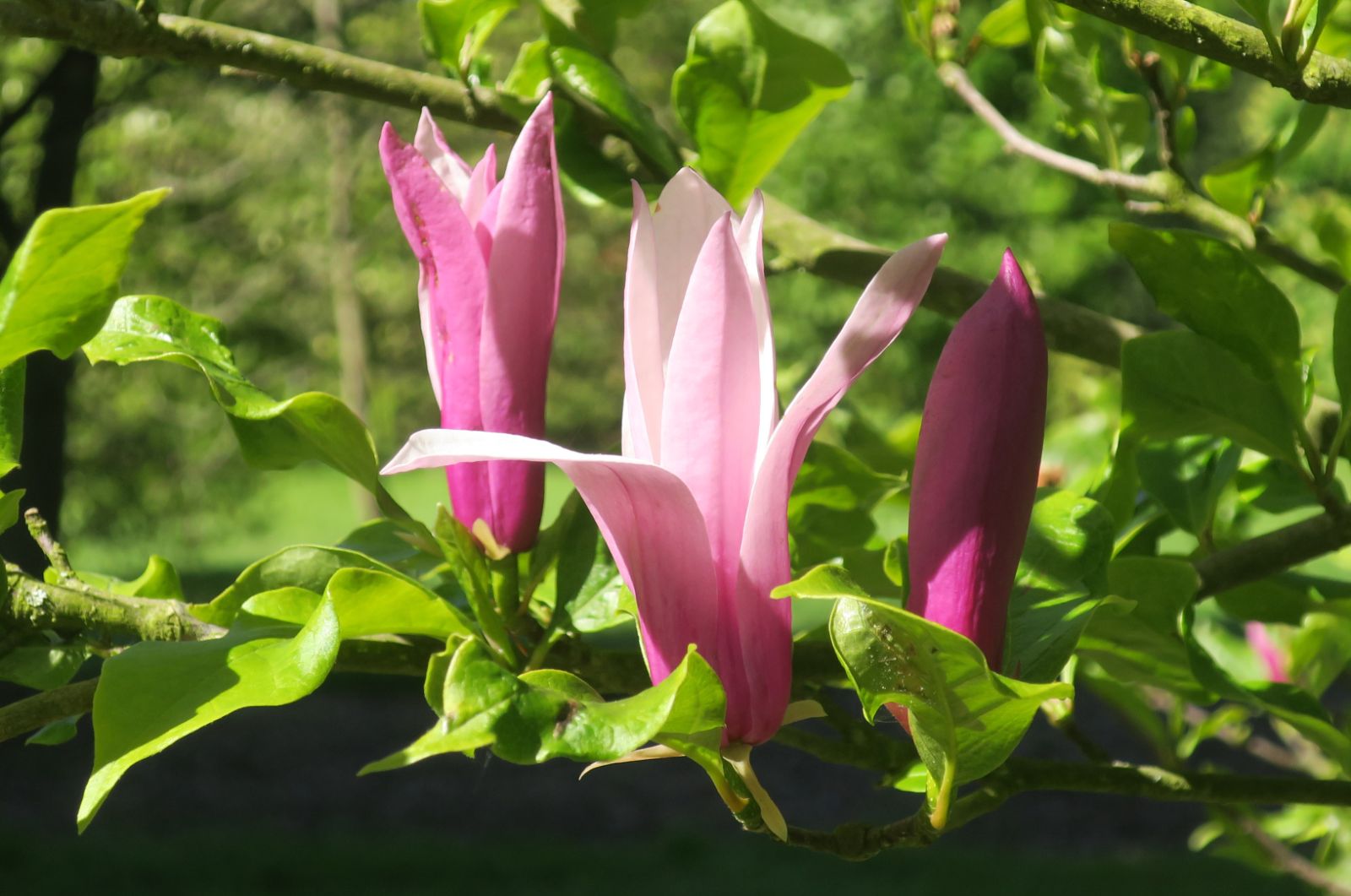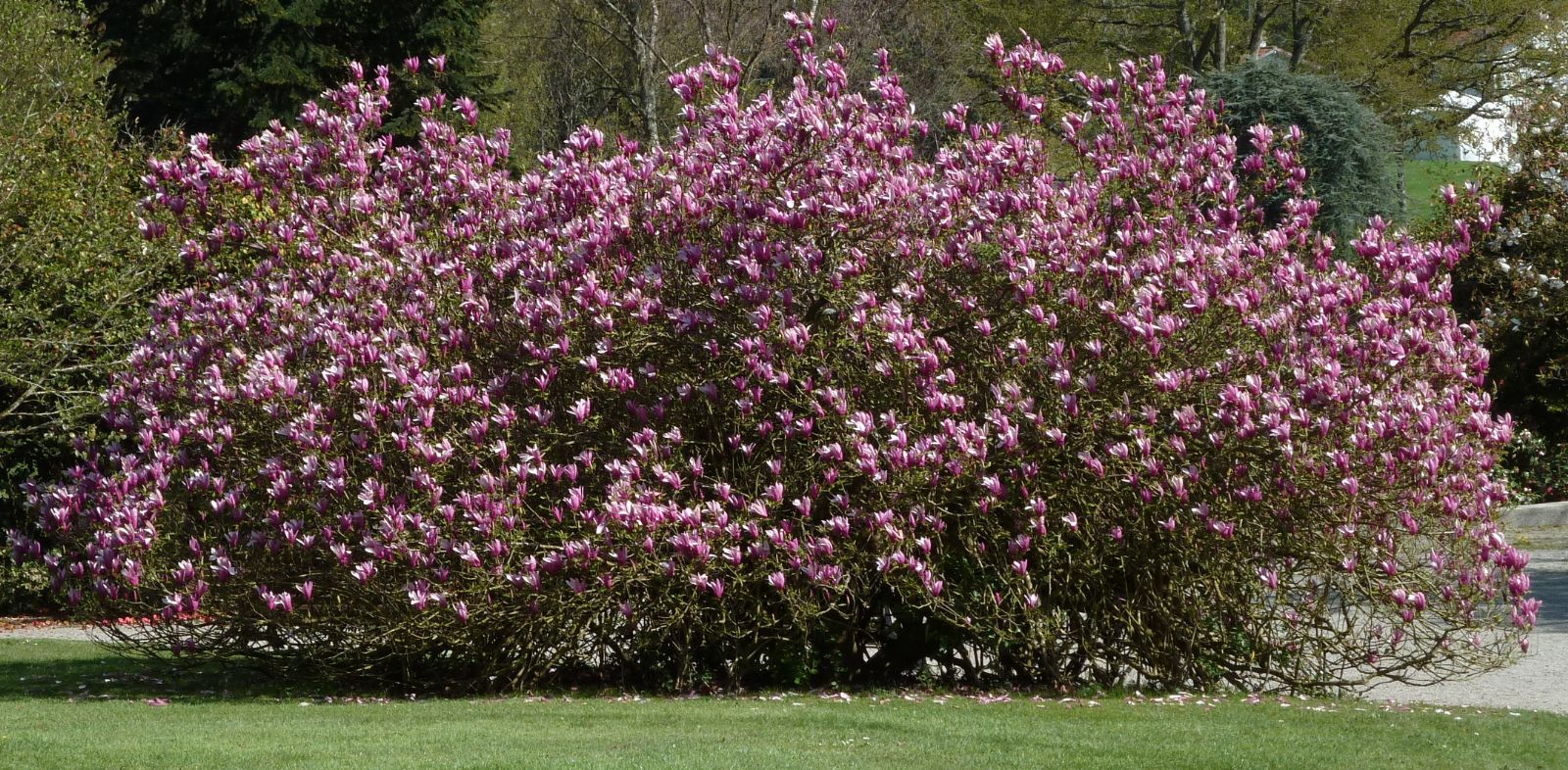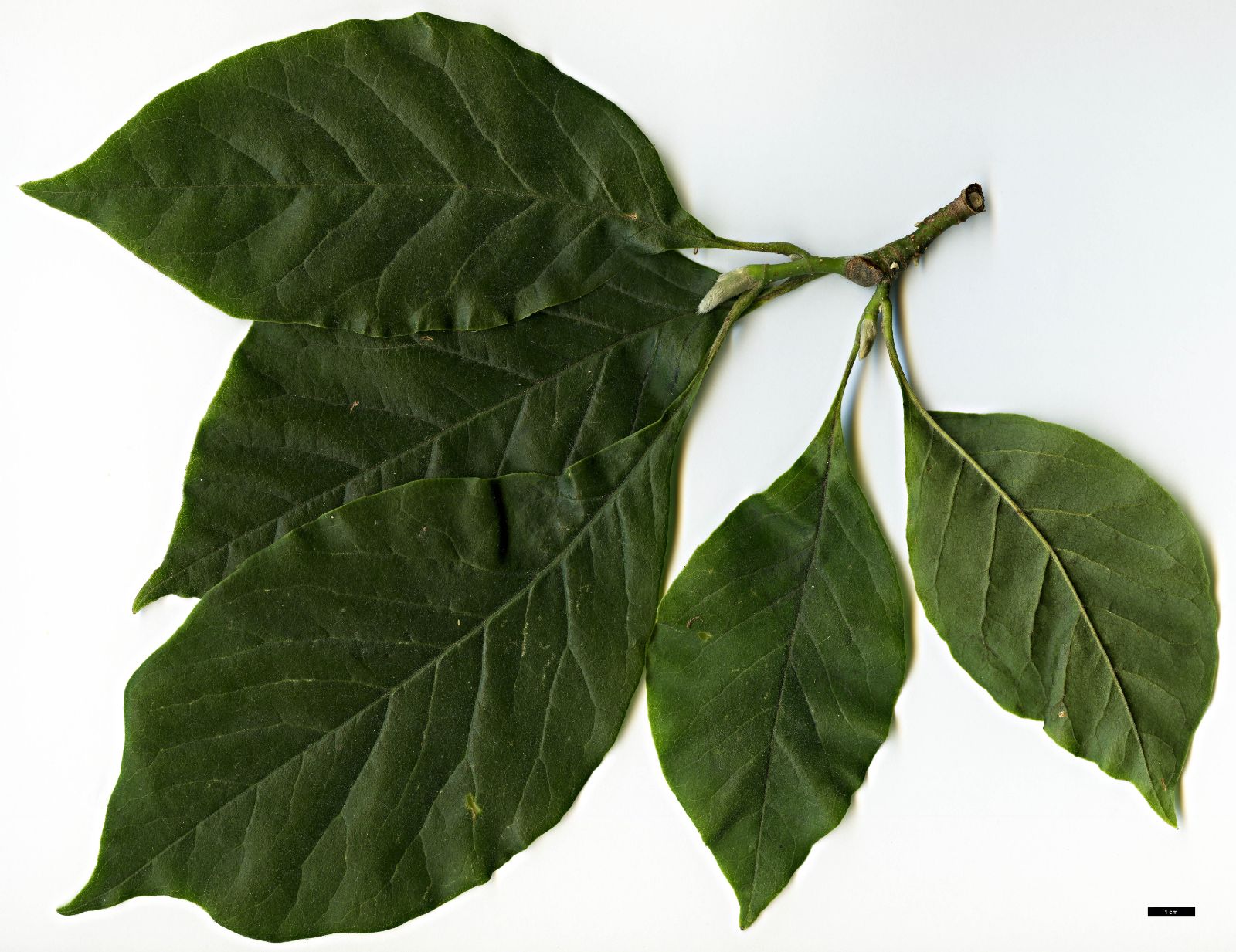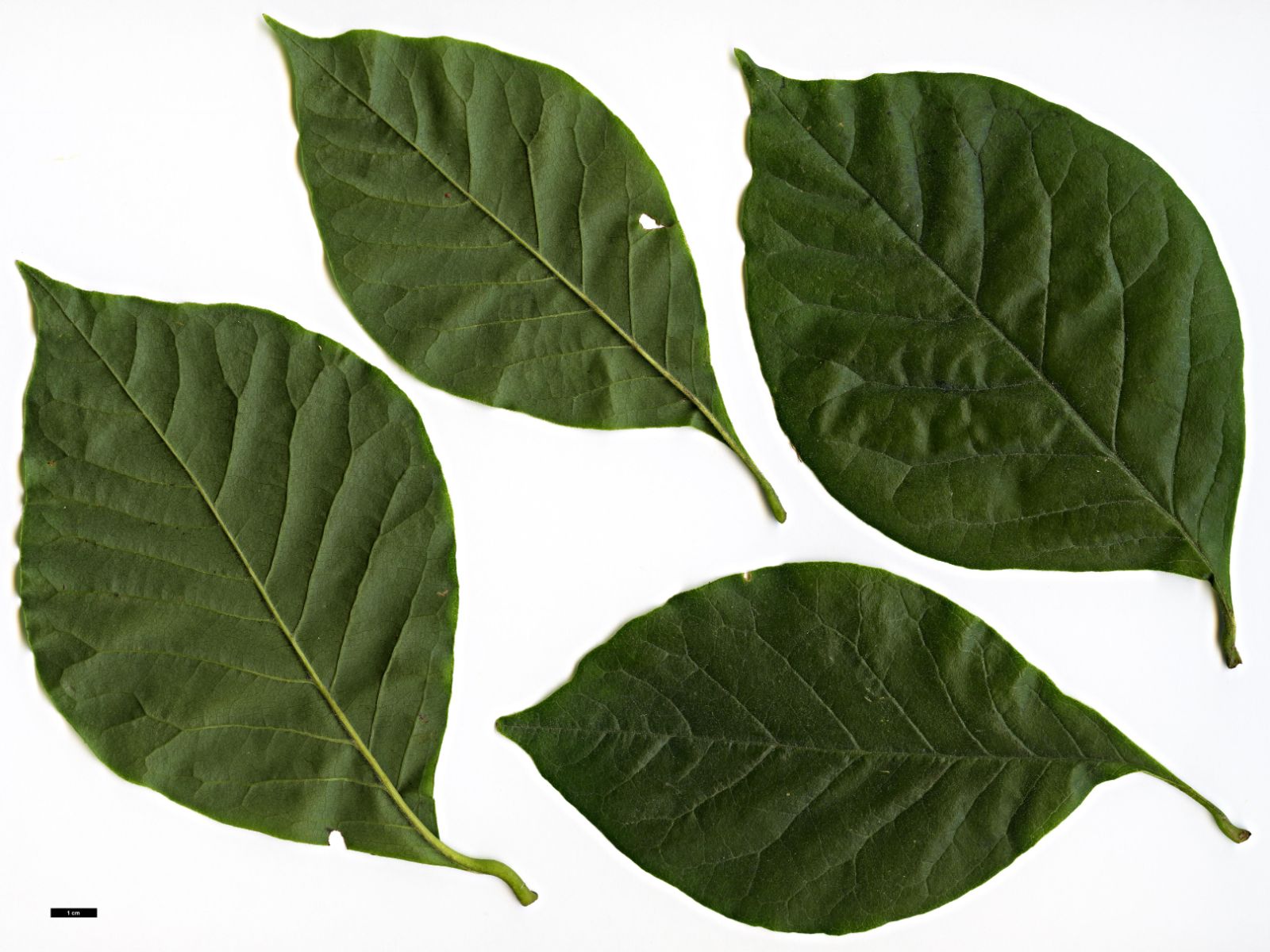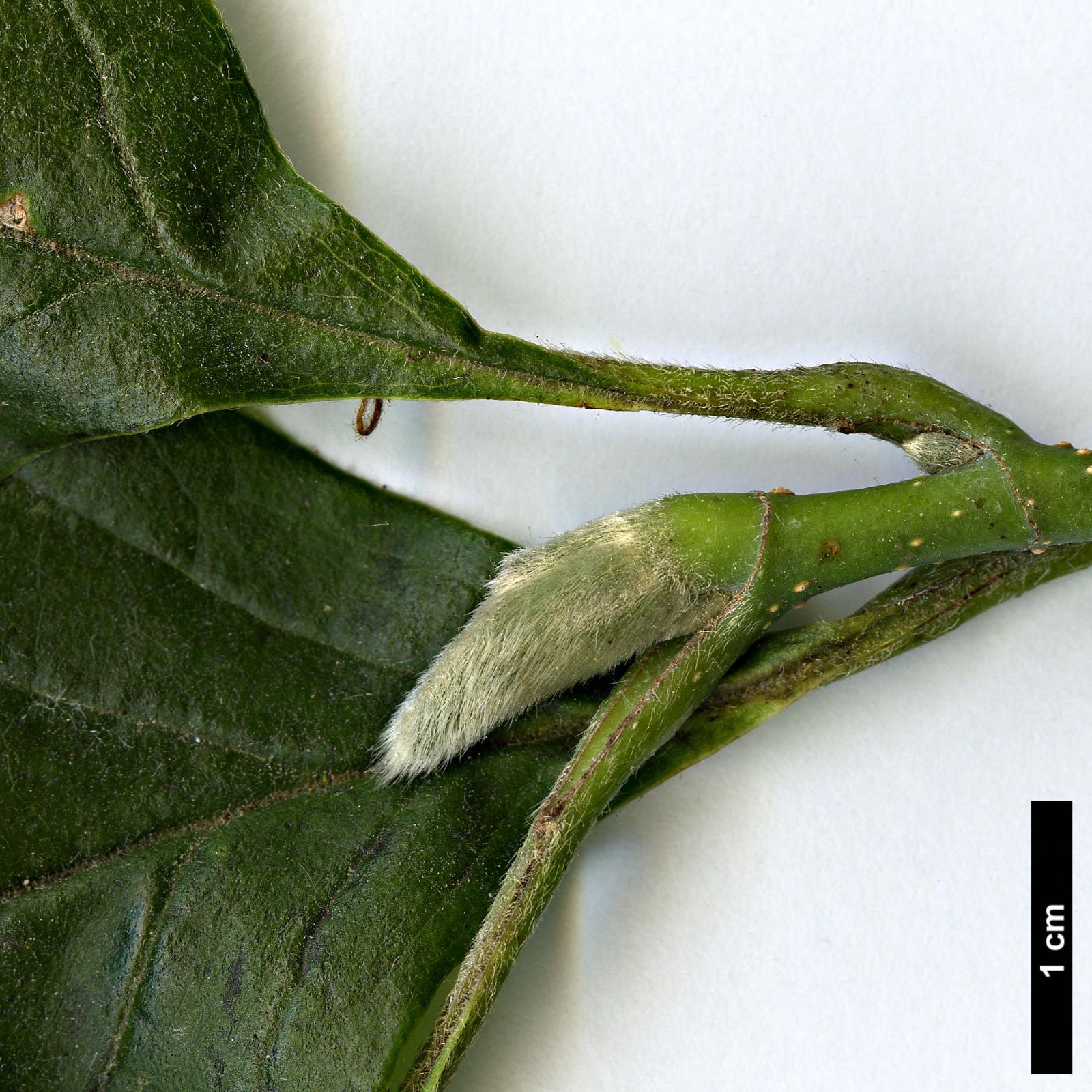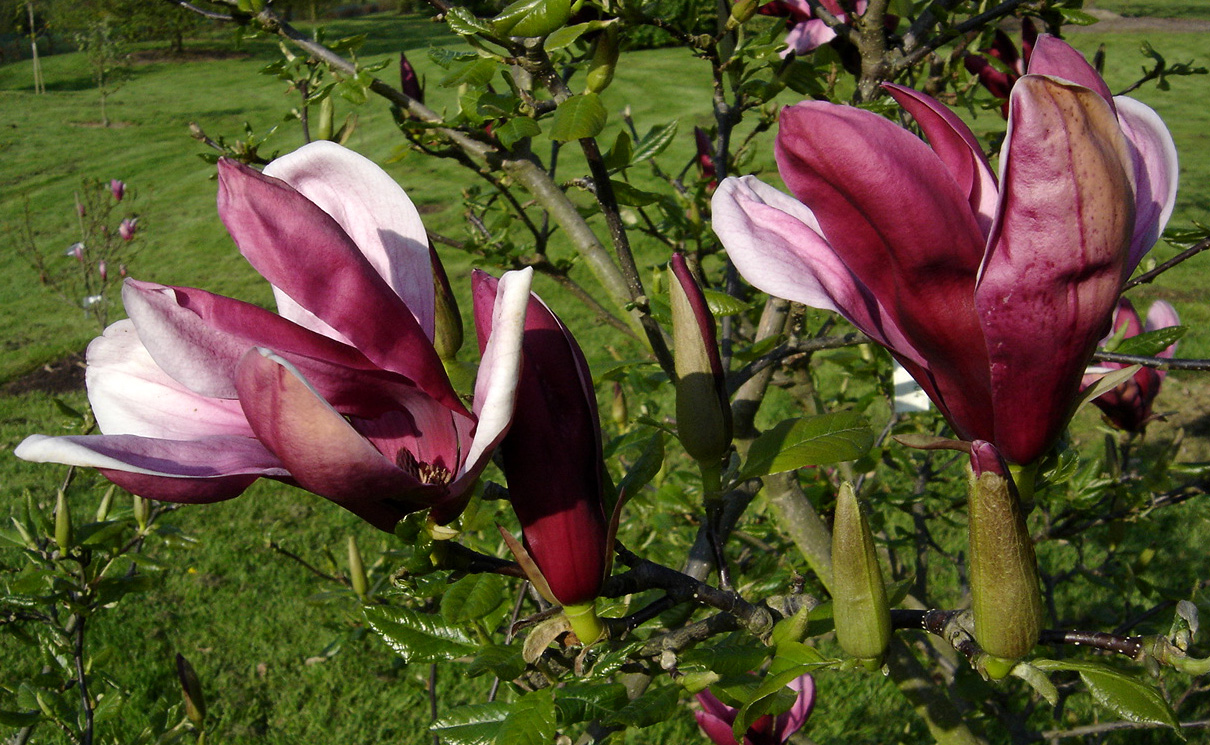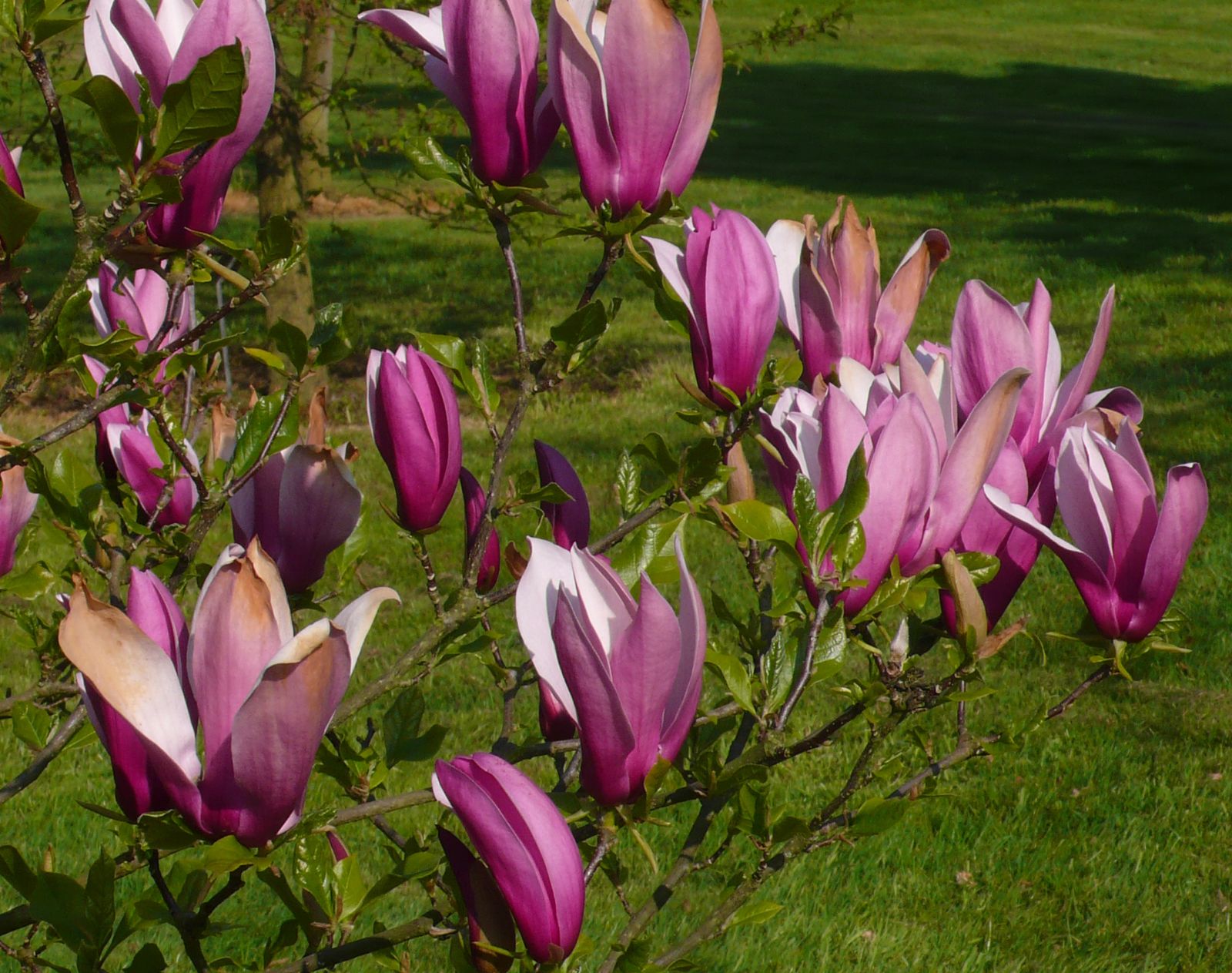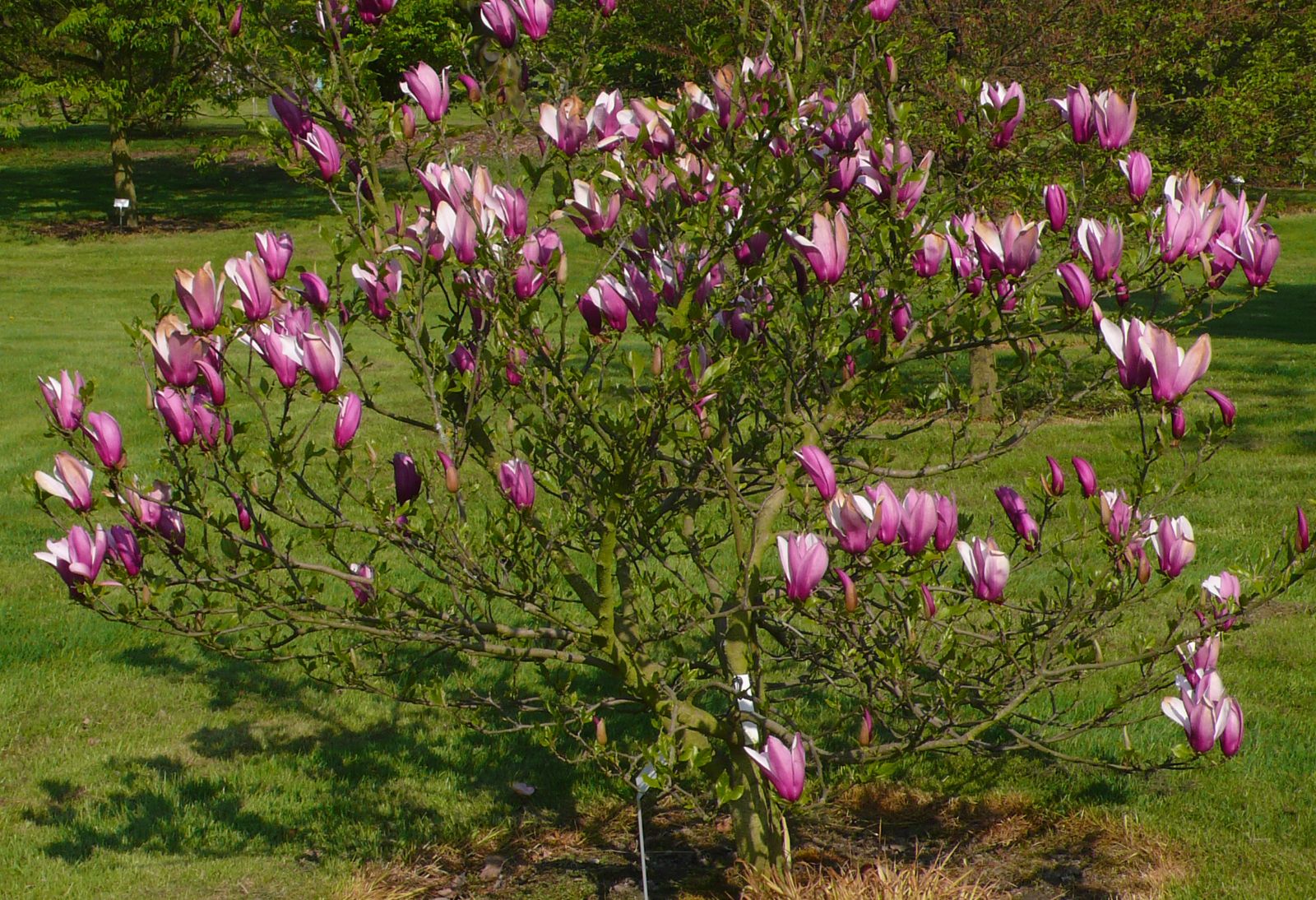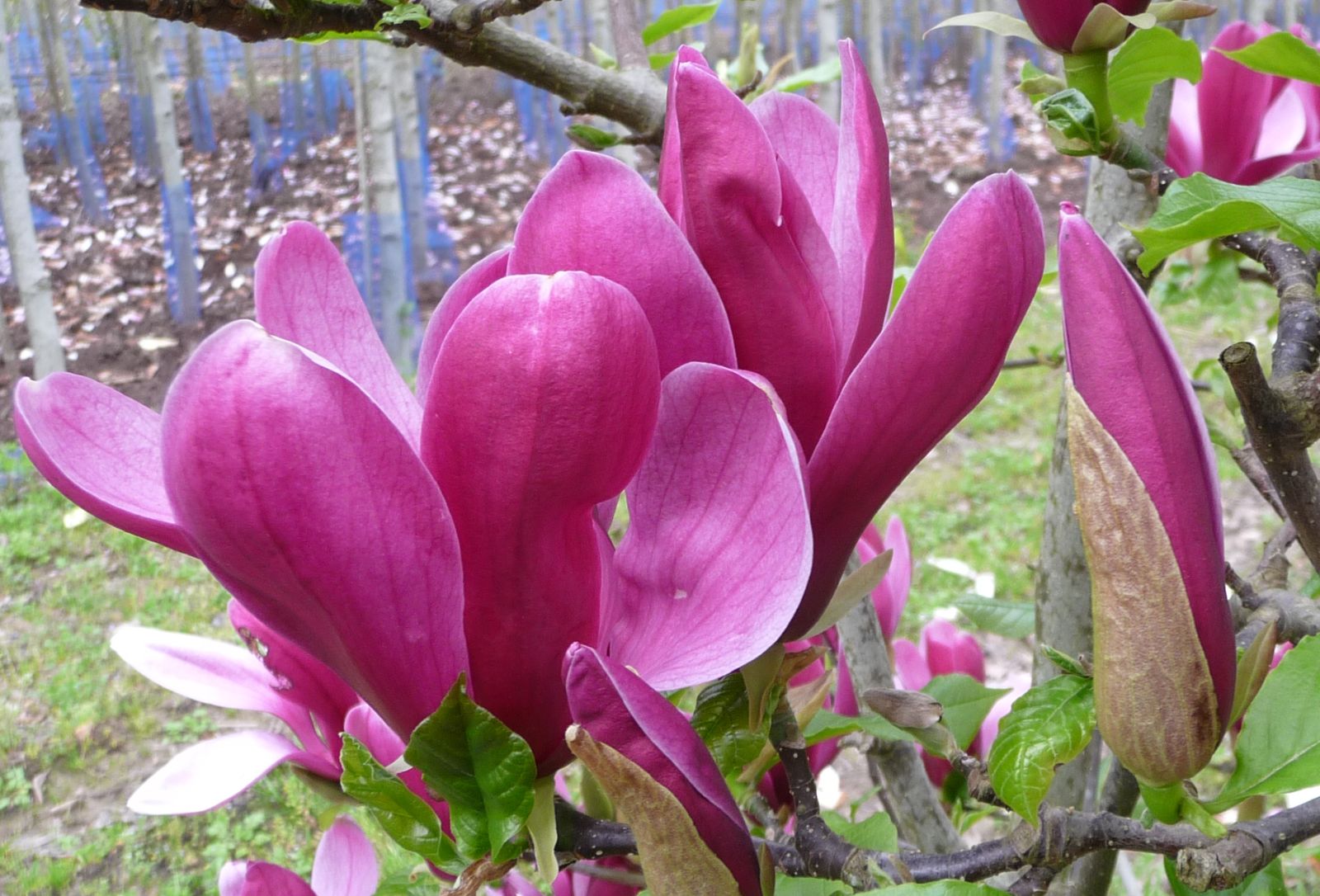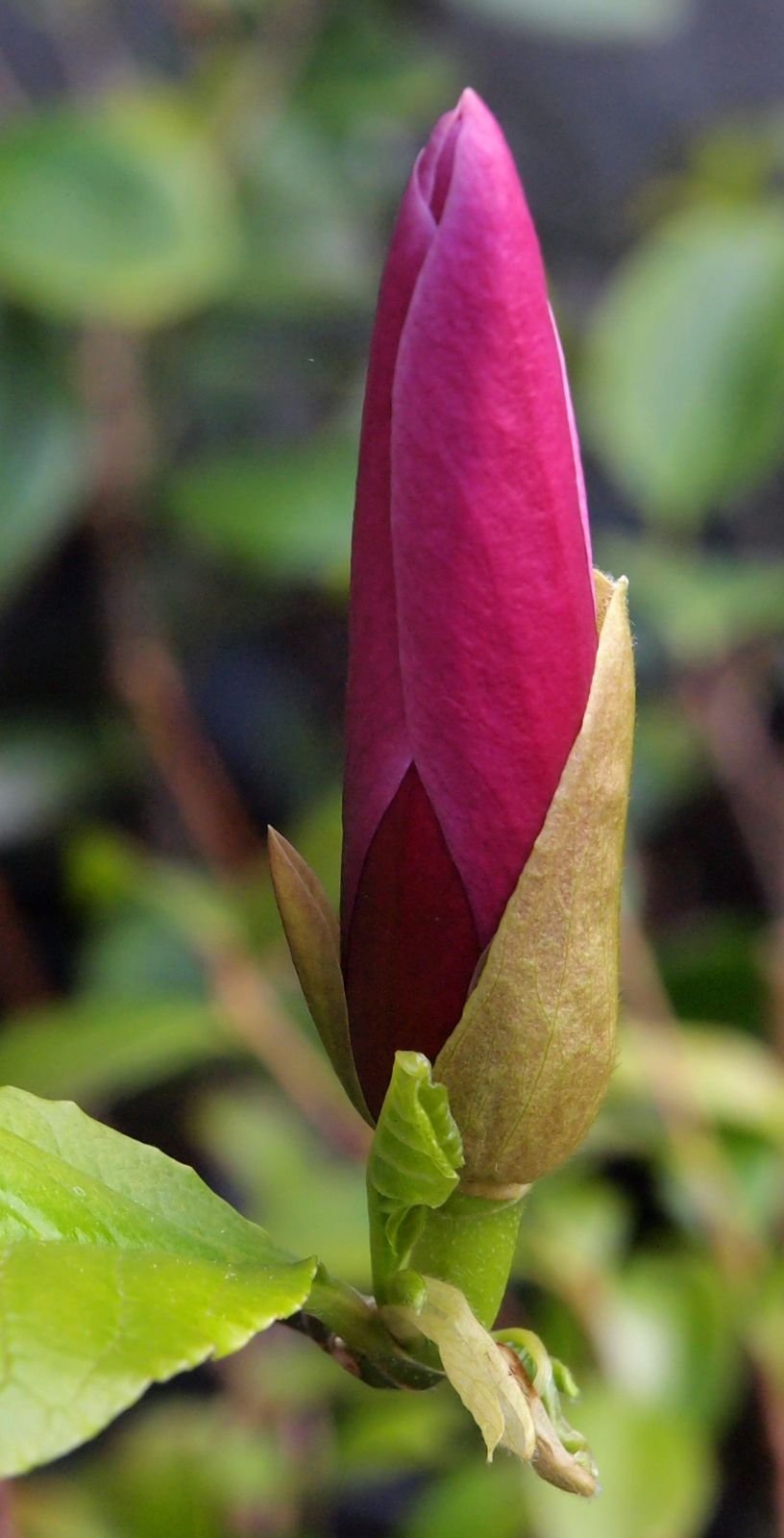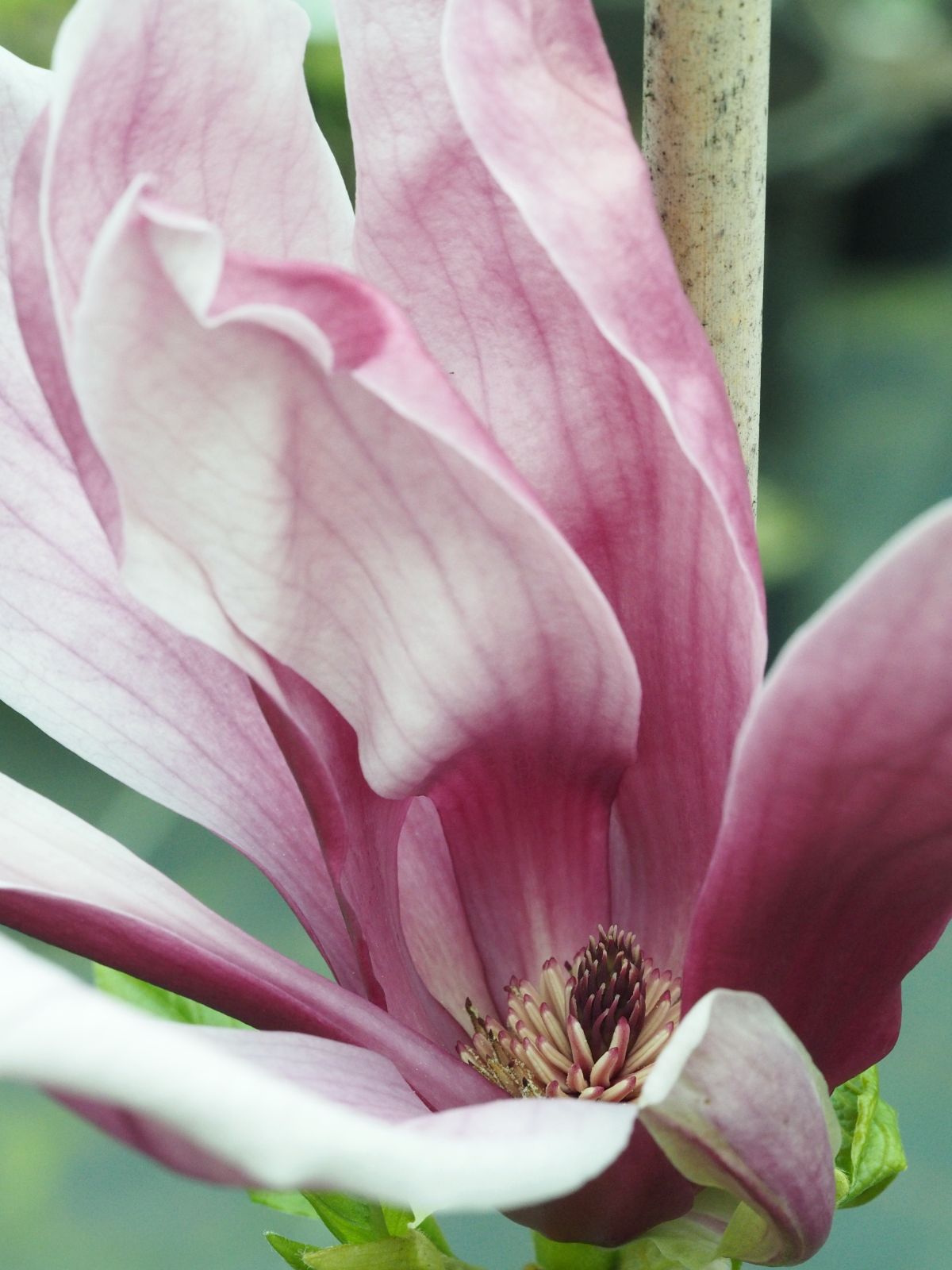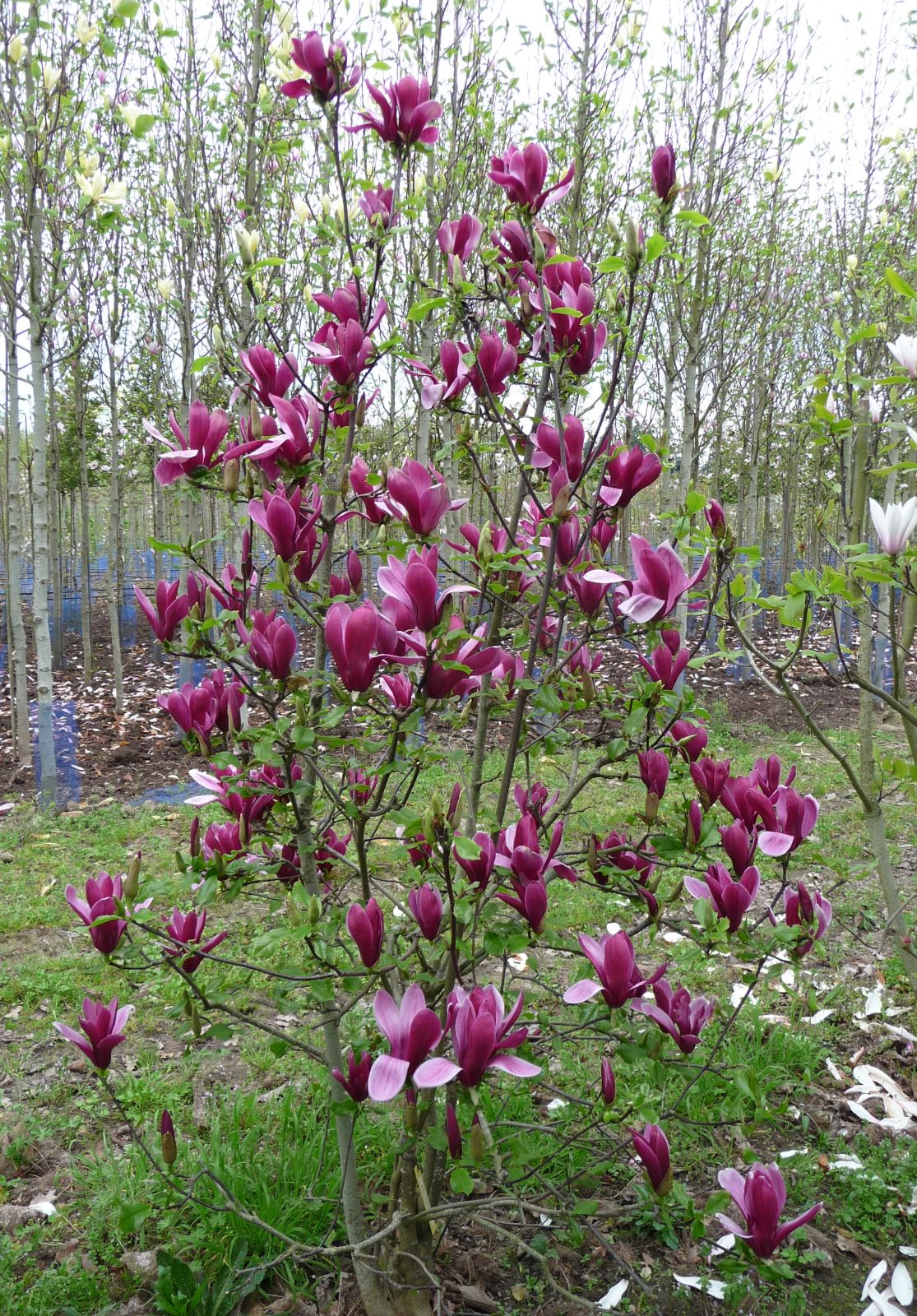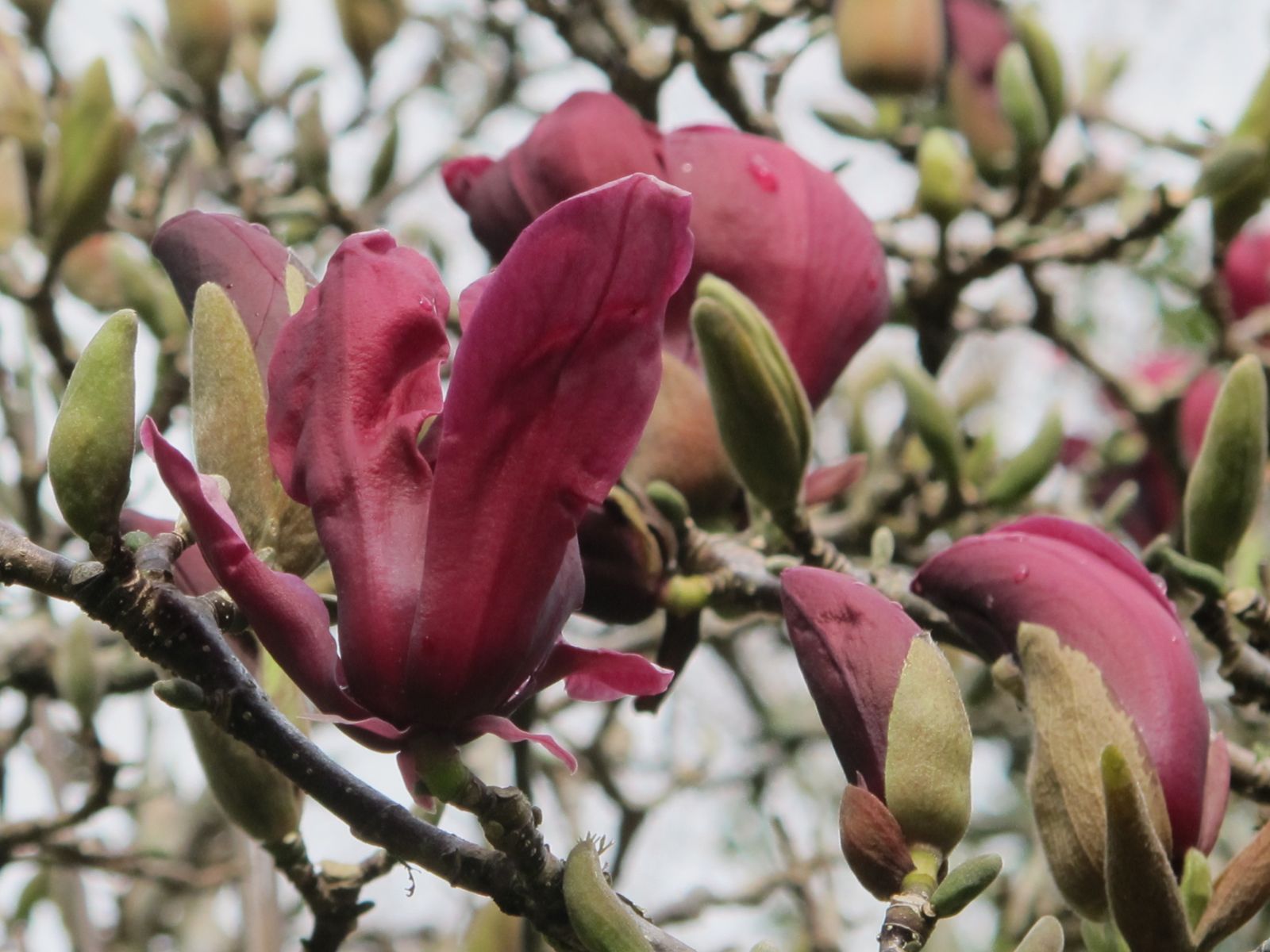Magnolia liliiflora
Sponsor
Kindly sponsored by
The Roy Overland Charitable Trust

Credits
Julian Sutton (2022)
Recommended citation
Sutton, J. (2022), 'Magnolia liliiflora' from the website Trees and Shrubs Online (treesandshrubsonline.
Genus
- Magnolia
- Section Yulania
Common Names
- zi yu lan
Synonyms
- Magnolia purpurea Curtis
- Magnolia quinquepeta (Buc’hoz) Dandy
- Yulania liliiflora (Desr.) D.L. Fu
Infraspecifics
Other taxa in genus
- Magnolia acuminata
- Magnolia × alba
- Magnolia amabilis
- Magnolia amoena
- Magnolia aromatica
- Magnolia biondii
- Magnolia × brooklynensis
- Magnolia campbellii
- Magnolia cathcartii
- Magnolia cavaleriei
- Magnolia caveana
- Magnolia champaca
- Magnolia changhungtana
- Magnolia chapensis
- Magnolia compressa
- Magnolia conifera
- Magnolia Cultivars A
- Magnolia Cultivars B
- Magnolia Cultivars C
- Magnolia Cultivars D
- Magnolia Cultivars E
- Magnolia Cultivars F
- Magnolia Cultivars G
- Magnolia Cultivars H–I
- Magnolia Cultivars J
- Magnolia Cultivars K
- Magnolia Cultivars L
- Magnolia Cultivars M
- Magnolia Cultivars N–O
- Magnolia Cultivars P
- Magnolia Cultivars Q–R
- Magnolia Cultivars S
- Magnolia Cultivars T
- Magnolia Cultivars U–V
- Magnolia Cultivars W–Z
- Magnolia cylindrica
- Magnolia dandyi
- Magnolia dawsoniana
- Magnolia de Vos and Kosar hybrids
- Magnolia decidua
- Magnolia delavayi
- Magnolia denudata
- Magnolia doltsopa
- Magnolia duclouxii
- Magnolia ernestii
- Magnolia figo
- Magnolia floribunda
- Magnolia × foggii
- Magnolia fordiana
- Magnolia foveolata
- Magnolia fraseri
- Magnolia fulva
- Magnolia globosa
- Magnolia × gotoburgensis
- Magnolia grandiflora
- Magnolia grandis
- Magnolia Gresham hybrids
- Magnolia guangdongensis
- Magnolia hookeri
- Magnolia insignis
- Magnolia Jury hybrids
- Magnolia × kewensis
- Magnolia kobus
- Magnolia kwangtungensis
- Magnolia laevifolia
- Magnolia lanuginosa
- Magnolia leveilleana
- Magnolia × loebneri
- Magnolia lotungensis
- Magnolia macclurei
- Magnolia macrophylla
- Magnolia martini
- Magnolia maudiae
- Magnolia nitida
- Magnolia obovata
- Magnolia officinalis
- Magnolia opipara
- Magnolia × proctoriana
- Magnolia × pruhoniciana
- Magnolia rostrata
- Magnolia salicifolia
- Magnolia sapaensis
- Magnolia sargentiana
- Magnolia sieboldii
- Magnolia sinensis
- Magnolia sinica
- Magnolia sinostellata
- Magnolia × soulangeana
- Magnolia sprengeri
- Magnolia stellata
- Magnolia tamaulipana
- Magnolia × thomsoniana
- Magnolia tripetala
- Magnolia × veitchii
- Magnolia virginiana
- Magnolia × wieseneri
- Magnolia wilsonii
- Magnolia xinganensis
- Magnolia yunnanensis
- Magnolia yuyuanensis
- Magnolia zenii
Large deciduous shrub, usually multistemmed, to 3.5 m tall. Bark grey-brown, branchlets purplish, 2–4 mm in diameter. Leaf blade elliptic-obovate to obovate, 8–18 × 3–10 cm; upper surface grey-green, pubescent along veins; upper surface deep green, sparsely pubescent when young; secondary veins 8–10 on each side of midvein; base gradually narrowing along petiole to stipular scar, apex acute to acuminate. Petiole 0.8–2 cm, stipular scar ~½ as long as petiole. Peduncle thick and strong, with trichomes. Flower buds ovoid, with silky, pale yellow hairs. Flowers appearing with leaves, vase-shaped, erect, slightly fragrant. Tepals 9–12; outer 3 tepals purplish green, sepal-like, lanceolate, 2–3.5 cm, falling early; tepals of inner 2 whorls purple to purplish red outside, whitish inside, petal-like, elliptic-obovate, 8–10 × 3–4.5 cm, fleshy. Stamens purplish red, 8–10 mm; connective exserted and forming a mucro; anthers ~7 mm, dehiscing laterally. Gynoecium pale purple, ~1.5 cm, glabrous. Fruit dark purplish brown, cylindric, 7–10 cm; mature carpels subglobose, apex shortly beaked. Flowering March–April, fruiting August–September (China). Tetraploid 2n=76. (Xia, Liu & Nooteboom 2008; Chen & Nooteboom 1993).
Distribution China Chongqing, Fujian, Hubei, S Shaanxi, Sichuan, NW Yunnan
Habitat Forest margins, slopes; 300–1600 m.
USDA Hardiness Zone 5-9
RHS Hardiness Rating H6
Conservation status Data deficient (DD)
Taxonomic note Synonymy in this species is complicated (see Chen & Nooteboom 1993; Meyer & McClintock 1987). The debate hinges on whether the older synonym M. quinquepeta (based on Lassonia quinquepeta Buc’hoz) should be rejected since its type was a mere artistic impression of the species (just the same problems apply to M. denudata q.v.). We follow Meyer & McClintock (1987), Royal Botanic Gardens, Kew (2021), Figlar (2012) and most contemporary usage in accepting the more familiar M. liliiflora.
This distinctive small, rather hardy species flowers later than most in Section Yulania. The combination of shrubby habit, flowers appearing at or after leaf emergence, and small, sepaloid outer tepals is unique in the Section. Despite a long history of cultivation, its biggest contribution to European and North American gardens is as a parent of hybrids.
This is a plant long grown in Chinese, Korean and Japanese temple gardens. It seems to have reached Europe from Japan in 1790, acquired by the British politician William Cavendish-Bentinck (3rd Duke of Portland) who had the unusual distinction of being Prime Minister twice, allied to different parties on each occasion. Its scientific description followed shortly, the specific epithet (‘lily-flowered’) referring to the way the flowers stand erect like lily buds or slender tulips, the purple- or pink-backed tepals spreading only later. Flowering is generally from mid-April into June, sporadic flowers continuing through summer. Clones vary considerably in tepal shape and colour. Fragrance is rarely significant, although George Forrest found a scented plant in Yunnan in 1924/5 and an individual with a delicate tea-rose scent was noted in Toksan Provincial Park, Korea, something perhaps worth noting for future breeding (Gardiner 2000). Introductions of genuinely wild material seem to have been at best vanishingly rare. A 1985 collection under KE 3523, grown at University of British Columbia Botanical Garden and marked as wild origin (University of British Columbia 2022; Quarryhill Botanical Garden 2021), was made in South Korea, outside its natural range. A specimen at RBG Edinburgh (accession number 19702528) is recorded as being wild collected in China, but without further data.
Essentially a rather spreading shrub, it rarely distinguishes itself in habit, attracting descriptions such as ‘straggling’ (Bean 1981) and ‘ratty’ (Dirr 2009). It is slow growing, although established plants in favoured sites may put on as much as 30 cm per year. Old plants can be pruned into low, spreading, multistemmed trees by careful removal of stems and crown raising, as with M. stellata. Like that species, M. liliiflora is suited for small gardens, although now largely superseded by its hybrids. Rarely, specimens become significantly taller, for example a 6.8 m example of ‘Nigra’ at Sissinghurst, E Sussex (The Tree Register 2021) and a Polish record of 7.3 m (Anisko & Czekalski 1991).
M. liliiflora thrives on all but chalky soils; a sheltered, sunny position on acidic soil is probably ideal. Clones vary in hardiness, ‘Nigra’ and ‘O’Neill’ being particularly tough. In Europe it is widely grown from Britain, Ireland and France east to Germany and Poland, mainly as ‘Nigra’ in the east (Anisko & Czekalski 1991). In North America it is widely hardy on both seaboards and in the Great Lakes area.
Its small size and frost-avoiding flowering time have made it a popular choice for hybridists. It is a parent (with M. denudata) of the classic M. × soulangeana, and has been used in North American breeding to produce the small de Vos and Kosar hybrids, the Gresham hybrids, ‘Galaxy’ and ‘Spectrum’ as well as having an input into new cultivars from New Zealand. Introduction of distinctive clones which exist in Korea (Gardiner 2000) may give further breeding potential.
'Darkest Purple'
Tepals 9, narrow, rich purple outside; flowers tend to face outward. Introduced about 1949 by Overlook Nurseries, Alabama.
'Gracilis'
Synonyms / alternative names
Magnolia gracilis Salisb.
Magnolia liliiflora var. gracilis (Salisb.) Rehd.
Small shrub with slender branches. Leaves narrow. Tepals narrow, deep purple outside. Introduced from Japan in 1804 (Bean 1981).
'Holland Red'
Tepals 6–8, rich purple-red on both sides; distinct spicy fragrance. Origin before 1989.
'Nigra'
Synonyms / alternative names
Magnolia × soulangeana 'Nigra'
Awards
AGM
Flowers narrow, suggesting candles in bud; petaloid tepals 6, dark red-purple at least outside. Hardy, vigorous and long-flowering. Introduced from Japan by John Gould Veitch in 1861, ‘Nigra’ is probably the commonest M. liliiflora cultivar grown in the British Isles, but in practice the name is applied to several clones which vary in the level of purple on the inner tepal surface. An important parent of hybrids.
'O'Neill'
Petaloid tepals 7–9, rich red-purple outside, pink-purple veined darker inside. Distributed by Joe McDaniel from the garden of Mabel O’Neill, Champaign, Illinois. In a conversation with Prof. McDaniel (Gardiner 2000) Todd Gresham indicated that he used a superior M. liliiflora clone in his breeding work, probably ‘O’Neill’.

